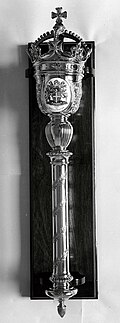Wellington City Council Te Kaunihera o Pōneke | |
|---|---|
 | |
 | |
| Type | |
| Type | |
| History | |
| Founded | 1870 |
| Leadership | |
Matt Prosser [1] since 5 December 2024 | |
| Structure | |
| Seats | 16 [a] |
 | |
Political groups |
|
| Elections | |
| STV | |
Last election | 11 October 2025 |
Next election | 2028 |
| Meeting place | |
| Ngake, Level 16, 113 The Terrace, Wellington [2] | |
| Website | |
| wellington.govt.nz/ | |
| Footnotes | |
| |
Wellington City Council is a territorial authority in New Zealand, governing the city of Wellington, the country's capital city and third-largest city by population, behind Auckland and Christchurch. It consists of the central historic town and certain additional areas within the Wellington metropolitan area, extending as far north as Linden and covering rural areas such as Mākara and Ohariu. The city adjoins Porirua in the north and Hutt City in the north-east. It is one of nine territorial authorities in the Wellington Region.
Contents
- Composition
- Council
- Committees
- Community boards
- History
- City status and council origin
- Amalgamations
- Wards
- List of town clerks/chief executives
- Civic symbols
- Coat of arms
- Badge and Flag
- Suburbs
- Takapū Northern ward
- Wharangi Onslow-Western ward
- Pukehīnau Lambton ward
- Paekawakawa Southern ward
- Motukairangi Eastern ward
- Buildings
- Council-owned companies and enterprises
- Sister-city relationships
- See also
- Notes
- References
- External links
The council represents a population of 210,800 as of June 2025 [3] and consists of a mayor and fifteen councillors elected from six wards (Northern, Onslow-Western, Lambton, Eastern, Southern general wards and Te Whanganui-a-Tara Māori ward). [n 1] [4] It administers public works, sanitation, land use and building consents, among other local services. The council has used the marketing slogan "Absolutely Positively Wellington" in an official capacity since the early 1990s. [5]
























